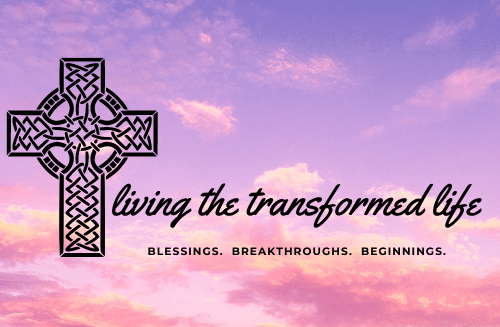
Let The Son Shine
I’m sure you’ve heard of the new film released last month called Jesus Revolution. It tells the true story of the Jesus People Movement, a youth-centered revival which started on the West Coast in the Sixties and rapidly spread across the country. Hundreds of thousands of kids who had been caught up in the counterculture of sex, drugs, and rock and roll discovered the Good News of the gospel. They experienced spiritual transformation and went from being known as hippies to being called Jesus freaks– and they enthusiastically embraced their new identity.
The film highlights the unusual and sometimes strained relationship between Chuck Smith, the middle-aged pastor of Calvary Chapel in Costa Mesa, California, and the long-haired hippie evangelist, Lonnie Frisbee, through the eyes of a disillusioned young man named Greg Laurie. It shows the explosive growth of the revival with stunning scenes of mass baptisms in the ocean and the confused reactions of the older generation. The film successfully captures the excitement of the era.
The closing credits mistakenly say that the Jesus Revolution came to a close in 1972. But I got saved on the East Coast in 1973, and the Jesus People Movement was still going strong for years after that. Eventually it declined, as all revivals do. But perhaps you’re wondering: whatever happened to the Jesus People?
The short answer is, they grew up. They cut their hair, they joined corporate America, they bought homes and started families. They followed the normal progression of life.
But there’s more to the story than that. Much more.

The Legacy of the Jesus Revolution
The Jesus Revolution affected American culture in ways that are still felt today. Prior to the revival, worship was predominantly restricted to denominational churches. But the Jesus Revolution brought a surge of independent churches not tied to any specific denomination, churches that were a cross between Evangelical and Pentecostal. Such churches continue to flourish today.
Styles of worship changed as well. The Jesus freaks brought along their guitars and drums. Hymnals were dropped in exchange for simple, easily learned worship choruses, and contemporary Christian music was born. Fifty years later it is still embraced and enjoyed by millions.
The authority of Scripture was widely accepted. The Bible was God’s Word, and the Jesus freaks believed it, read it and studied it fervently. It was God’s love letter to man, and thus was held in high esteem. Sadly, in some churches today this is no longer the case.
Evangelism was also a focal point of the Jesus Revolution. Street witnessing was commonplace, and millions of gospel tracts were distributed. Most believed that Jesus was coming soon, so there was an urgency to spreading the gospel. The raised index finger and the slogan “One Way” succinctly expressed the belief that there was only one way to heaven, and that was salvation through Jesus. Satan has always opposed the gospel, though, and today’s secularized society has developed a resistance to the evangelism methods of the past.
The Jesus People Movement spawned the birth of churches, coffeehouses, Bible colleges and evangelistic ministries nationwide. The impact of the revival has been far-reaching and long-lasting. Pastor Ray Ortlund said it well: “Woodstock is overrated. The real story of fifty years ago was the Jesus Movement.”
Where Have All The Jesus Freaks Gone?
But the question remains: what happened to the Jesus people? Where have all the Jesus freaks gone?
Sadly, some of them fell away from the faith. Some of them drifted into cults.
Some of them, like Greg Laurie, became pastors. Others became missionaries to foreign lands.
And many of them became involved in local churches, both denominational and independent. They continue to believe in the authority of the Bible. They still seek to spread the gospel. If you were to conduct a survey, I’m absolutely certain you would find that many church leaders, those people considered the pillars of the church, would be people who came to Christ during the Jesus Revolution.
However, they’re aging. The Jesus freaks are senior citizens now.
They still love the Lord. But many believe it’s time for a new Jesus Revolution.

And it’s coming. We see the revival that began this year at Asbury College spreading to other college campuses. The pandemic brought a decline in church attendance, yet those who have remained are experiencing spiritual renewal. The Holy Spirit is moving more and more.
This new revival won’t look exactly like the last one, and it probably won’t be called the Jesus Revolution. But it’s coming. Are you ready to catch the wave?
I know I am. I may be 67 years old…but I’ll always be one of the Jesus People.
So if you still want to call me a Jesus freak…I’m okay with that.
Did you enjoy this article? Comment, share, subscribe!
Related Posts:
“Plant Those Gospel Seeds!” https://www.livingthetransformedlife.com/plant-those-gospel-seeds

Tim: as usual, you summarize things so well. I’m remembering so many things from the 70’s move of God. Repentance, changed lives, newly saved people bringing their friends to Christ, evangelism, new music, powerful singing and worship, and much more. Small local churches having multiple baptisms each year and each baptism having many new followers of Christ. May the Lord move on us in a powerful way again as we seek and obey Him!
Amen! 🙂
YES!!!!!!! I love this! I am totally ok being a Jesus freak. I’m going to try to find this movie. I’d seen a billboard but wasn’t sure exactly what it was about. By the time I got home, forgot to research it. 🙂
Thanks for posting.
spot on!
Good article Tim!
Thanks, Deb. Feel free to share!
Hi Jesus freak! I’m one too! 😁 Excellent as always! Love you! P.